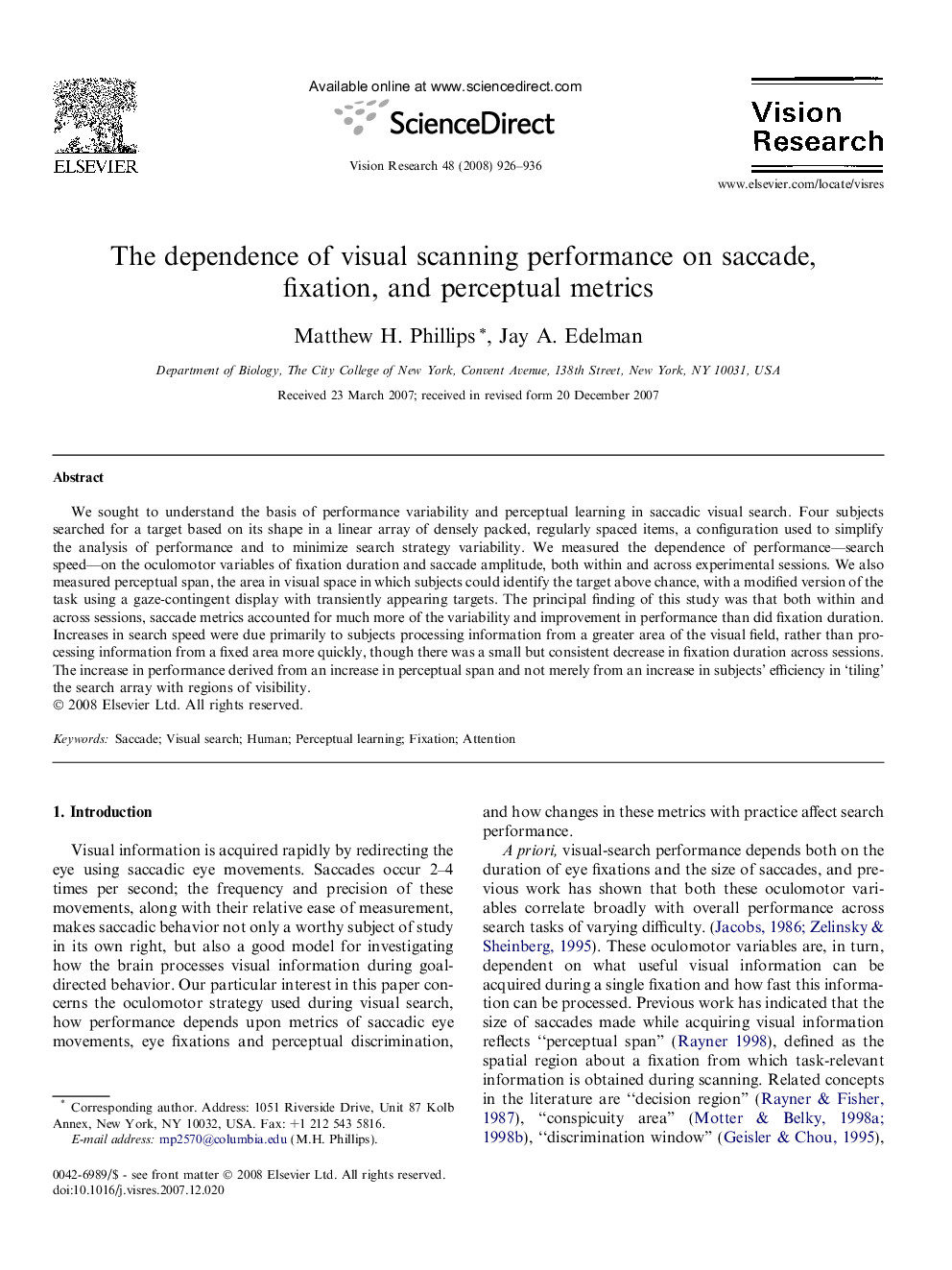| Article ID | Journal | Published Year | Pages | File Type |
|---|---|---|---|---|
| 4035338 | Vision Research | 2008 | 11 Pages |
We sought to understand the basis of performance variability and perceptual learning in saccadic visual search. Four subjects searched for a target based on its shape in a linear array of densely packed, regularly spaced items, a configuration used to simplify the analysis of performance and to minimize search strategy variability. We measured the dependence of performance—search speed—on the oculomotor variables of fixation duration and saccade amplitude, both within and across experimental sessions. We also measured perceptual span, the area in visual space in which subjects could identify the target above chance, with a modified version of the task using a gaze-contingent display with transiently appearing targets. The principal finding of this study was that both within and across sessions, saccade metrics accounted for much more of the variability and improvement in performance than did fixation duration. Increases in search speed were due primarily to subjects processing information from a greater area of the visual field, rather than processing information from a fixed area more quickly, though there was a small but consistent decrease in fixation duration across sessions. The increase in performance derived from an increase in perceptual span and not merely from an increase in subjects’ efficiency in ‘tiling’ the search array with regions of visibility.
